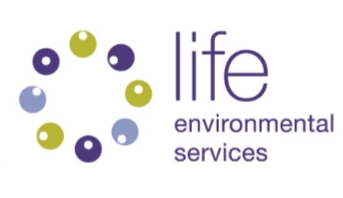Title Page
Asbestos Contractors Site Audit
-
Audit Number & Description
Table of Contents
Section 1 - Opening of Audit
Section 1 - Opening of Audit (Continued)
Section 2 - Observed Work Practices and Immediate Site Control: Asbestos Risks
Section 3 - Observed Work Practices and Immediate Site Control: Non-Asbestos Risks
Section 4 - Plan of Work
Section 5 - Measuring and Monitoring
Section 6 - Supporting Documentation
Section 7 - Additional Notes
Section 8 - Close of Audit
-
Site Details
-
Client Details
-
Project Manager
-
This audit is a representation of the site visit, at the time of audit, in response to interactions with the Asbestos Removal Contractors Site Representative.
These are additional checks and do not mitigate the Contractors responsibility for site safety, in line with their in-house procedures and current regulations.
Section 1 – Opening of Audit
-
Company Name:
-
Date & Time of Arrival
-
Audit site address:
-
Supervisor Name:
-
Auditors Name
-
Type of asbestos:
-
Approx. extent of works:
-
Brief Description of Stage of Work / Work Being Undertaken during the Audit:
Section 1 – Opening of Audit (Continued)
1.1 A valid ASB5 notification form on site for the works being audited
-
The site details on the ASB5 are correct
-
The audit is within the dates stated on the ASB5
-
The ASB5 clearly describes the scope of the works
1.2 There is sufficient provision to view activities within the working enclosure and make meaningful observations
-
Viewing panels and/or CCTV are in place to sufficiently observe work practices and all areas of the enclosure so far as is reasonably practicable
1.3 Asbestos removal/cleaning is in progress during the audit
-
Removal works and associated activities are (or will be) taking place within the enclosure during the audit
Section 2 – Observed Work Practices and Immediate Site Control: Asbestos Risks
2.1 The enclosure is in good condition, properly constructed and maintained to prevent the spread of asbestos
-
The integrity of the enclosure has been established and maintained
-
Viewing panel sizes meet the minimum requirement
-
The selection and provision of warning signs are appropriate to the works
2.2 The airlock meets the requirements in terms of size, construction, cleanliness and necessary features
-
The airlock meets the minimum size requirement
-
Smaller airlock dimensions are detailed and correctly justified in the Plan of Work
-
The airlock is free from visible asbestos debris
-
There is suitable provision for clean RPE
-
All airlock openings/flaps are suitable and weighted
-
An inner stage viewing panel is present and of the correct size
-
Other observation
2.3 The baglock meets the minimum requirements in terms of construction, cleanliness and necessary features and is of a minimum size or greater to accommodate large items of waste
-
A separate baglock has been provided
-
The absence of a baglock is correctly justified in the Plan of Work
-
The baglock meets the minimum size requirement
-
The baglock has smaller dimensions, which are detailed and correctly justified in the Plan of Work
-
The baglock is big enough for the waste size
-
The baglock is free from visible asbestos debris
-
All baglock openings/flaps are suitable and weighted
-
An inner stage viewing panel is present and of the correct size
-
Other observation
2.4 The site is clean and orderly, including clear transit and waste routes of minimal distance and clean and tidy vehicle(s)/equipment storage
-
There is suitably maintained and signed transit route of minimal distance
-
The waste route is free from visible asbestos debris
-
The waste route is free from general waste
-
The company vehicles and/or equipment store are reasonably tidy and clean, with no contamination issues or concerns
2.5 Controlled asbestos removal has been observed, including the use of suitable dust suppression methods and with waste appropriately bagged
-
The dust suppression method in use is suitable for the ACM being removed
-
The removal procedure observed is suitable for the ACM being removed
-
Waste is properly and promptly bagged
2.6 RPE and PPE is suitable for the task and correctly worn
-
RPE is suitable for the task(s)
-
Enclosure overalls are type 5/6
-
Transit overalls are type 5/6
-
All RPE and PPE is being properly worn
2.7 Air management allows for sufficient air changes and air movement through the enclosure, with airlock flap deviation indicating sufficient airflow through the airlock
-
The enclosure design allows for ideal air management
-
The air movers installed provide sufficient air changes/airflow
-
There is sufficient airlock flap deviation to indicate adequate airflow through the airlock
-
Additional air inlets are suitably positioned and in use (where applicable)
2.8 Plant and equipment is suitable and sufficient for the work, is properly located and being correctly used
-
There are a minimum of 2 H-type vacuum cleaners on site
-
The number and capacity of NPUs matches the Plan of Work
-
Each NPU is either located outside the working enclosure, or sheeted out if inside the enclosure
-
There is a functional non-return flap on each NPU
-
Extracted air from each NPU is vented outside
2.9 The DCU is fully functional, operational, equipped and suitably positioned
-
The DCU arrangement is in the form of a
-
A direct connection is the most suitable option
-
The NPU on the DCU is functioning
-
Lighting and heating are functioning and sufficient
-
There are sufficient shower heads for the number of personnel
-
The DCU is as clean as is reasonably practicable
-
Waste water is filtered and discharged either directly or via containers to a drain
-
External dirty end and internal doors are all self-closing
-
DCU doors are marked (including the prohibited entry and mandatory PPE signage) where required
-
Other observation
Section 3 – Observed work practices and immediate site control: Non-Asbestos risks
3.1 For significant non-asbestos risks on site, appropriate controls are being used/in place (excluding substances)
-
Work at height
-
Live services
-
Manual handling
-
Noise
-
Hand arm vibration
-
Work place transport
-
Other
3.2 For significant risks from substances introduced to site (or existing on site), appropriate controls are being used/in place/ available
-
Substances have been identified
-
COSHH assessments are available
-
Controls are in place/available
3.3 Other observations relating to non-asbestos risks
Section 4 – Plan of Work
4.1 The sketch plan clearly shows all the required details
-
Location of ACMs
-
Outline of the enclosure
-
Adjacent areas
-
Airlock location
-
Baglock location
-
NPU location(s)
-
Viewing panel/CCTV locations
-
DCU location
-
Transit route
-
Waste route
-
Waste skip/waste van
4.2 The actual site setup matches the sketch plan
-
The features shown on the sketch plan have all been implemented in the site setup
4.3 The conditions, arrangements, practices and controls observed on site match those stated in the Plan of Work
-
The site supervisor is the supervisor named in the Plan of Work (or Standard Procedure)
-
The construction of the enclosure(s) and airlock(s) matches that detailed in the Plan of Work (or Standard Procedures)
-
The dust suppression method observed matches that detailed in the Plan of Work
-
The removal procedure observed matches that detailed in the Plan of Work
-
The RPE being used matches that stated in the Plan of Work
-
The colours of overalls match those stated in the Plan of Work (or Standard Procedures)
4.4 The arrangements in the Plan of Work clearly convey how management have envisaged the work to be carried out
-
The Plan of Work clearly details when the work is to be carried out, including dates, start/finish times and weekend variations
-
The Plan of Work details the analytical company providing the 4-stage clearance
-
The Plan of Work details who the analytical company is contracted to
-
The Plan of Work (or Standard Procedures) details the enclosure entry and exit procedures
-
The Plan of Work (or Standard Procedures) details the arrangements for smoke testing and witnessing
-
The Plan of Work details the air monitoring arrangements for the duration of the works
-
The arrangements for waste disposal are clearly described in the Plan of Work and evident on site
-
The Plan of Work (or Standard Procedures) details the method and permissions required to amend the Plan of Work
-
Welfare facilities are detailed in the Plan of Work and are available for use as described
4.5 Where amendments to the Plan of Work have been required, these have been authorised by the appropriate level of management
-
Required amendments to the Plan of Work/ sketch plan have been made
-
Required amendments have been correctly authorised where necessary
4.6 The scope of works is adequately described in the Plan of Work and it matches the details recorded on the ASB5
-
The details in the Plan of Work are accurately reflected in the information provided on the ASB5
4.7 Other observations relating to the Plan of Work
Section 5 – Measuring and Monitoring
5.1 All components of full face RPE are uniquely identifiable and inspection records are available for inspection and are up to date
-
All components of full face RPE are uniquely identifiable
-
RPE inspection records are available on site and are up to date
5.2 Daily site and plant inspection records are available for inspection and are up to date
-
Enclosure
-
Airlock
-
Baglock
-
NPU(s)
-
NPU pressure gauge readings
-
NPU anemometer readings
-
Vacuum cleaners
-
DCU
-
DCU pressure gauge readings for NPU
-
Blasting equipment
-
Scaffolding/mobile towers
-
MEWPs
-
Other
5.3 A smoke test record for the enclosure has been completed and the witness details match those stated in the Plan of Work
-
A smoke test record has been completed
-
The smoke test was witnessed by the person/ organisation detailed in the Plan of Work
5.4 Air monitoring and personal sampling has been carried out in an appropriate time, with a clear indication of the tasks being undertaken during monitoring
-
Background/leak tests and/or personal monitoring have been planned for this job according to the Plan of Work
-
It would be reasonable to expect the air monitoring programmed to have commenced by the point of the audit
-
Air monitoring has been undertaken as proposed
-
Personal air monitoring records provide a clear indication of the tasks being undertaken during monitoring
5.5 There is evidence of management involvement to monitor progress and standards on site, through management visit, internal audit or inspection
-
There is evidence of management involvement on site since the commencement of works, e.g., site visit as scheduled in the Plan of Work
-
Management involvement was scheduled to have taken place, but there is no evidence of such involvement
-
It would be unreasonable to expect management involvement up to the point of audit, e.g., early stage of contract or future visit scheduled
-
Remedial action has been taken as a result of the management involvement
5.6 Other observations relating to the measuring and monitoring
Section 6 – Supporting Documentation
6.1 The copy of Standard Procedures on site is current and matches the version referred to in the Plan of Work
-
Standard Procedures are on site and appear current
-
The Plan of Work references the Standard Procedures
-
The version number of the Standard Procedures matches the reference in the Plan of Work
6.2 A copy of the current HSE licence and evidence of current employer’s and public liability insurance are on site
-
A copy of the current HSE licence is available on site
-
Evidence of current employer’s liability insurance is on site
-
Evidence of current public liability insurance is on site
6.3 Current certificates of thorough test and inspection are available for all plant on site
-
NPU(s) on enclosure
-
Vacuum cleaners
-
NPU in DCU
6.4 Medical, training/ competency and face fit certification for 2 selected employees is relevant, in date and authenticated where necessary
-
Name of employee 1
-
Employee in the enclosure
-
Current medical certificate is on site
-
Evidence of competence (competence certificate less than 12 months old or current training certificate or evidence of TNA) is on site
-
Face fit test certificate is available for the RPE in use
-
Employee is clean shaven
-
Name of employee 2
-
Employee in the enclosure
-
Current medical certificate is on site
-
Evidence of competence (competence certificate less than 12 months old or current training certificate or evidence of TNA) is on site
-
Face fit test certificate is available for the RPE in use
-
Employee is clean shaven
-
For certificates where the name of the company being audited has not been recorded on the certificate by the provider; has each copy been authenticated by, or under the direction of senior management, with a statement confirming their validity
6.5 There is a clearance test certificate for the DCU from the previous job
-
A clearance test certificate is available for the DCU
6.6 Other observations relating to supporting documentation
Section 7
Additional Notes
Additional Photos
-
Add media
Section 8 – Close of Audit
-
PLEASE ENSURE THAT A CORRECTIVE ACTION REPORT IS ISSUED FOR ALL ITEMS NOT RESOLVED AT THE TIME OF AUDIT AND THAT DATES ARE SET FOR THE CLOSEOUT OF THESE ITEMS
-
Supervisors name:
-
Form completed electronically on site and emailed to Contract Manager and Site Supervisor
-
Auditors name:
-
Auditors departure time:









